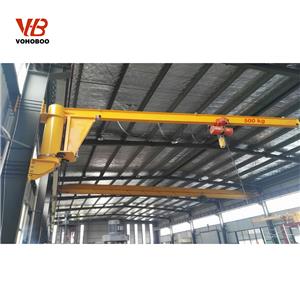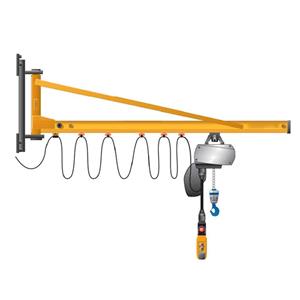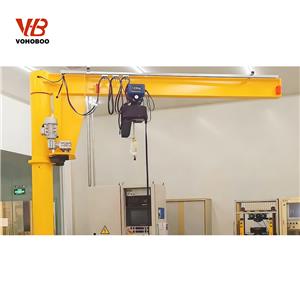Technical requirements for operating safety of electric single-girder cranes
In order to reduce the possibility of safety accidents in the operation of electric single-girder cranes, it is necessary to understand the following requirements on safety technology. The following Vohoboo staff will introduce the relevant knowledge in this regard.
1. The driver should carefully check the safety devices and main components of the crane before work, and confirm that they are flexible and reliable before use.
2. The operator must listen to the command signal of the commander to perform the operation, and the emergency signal issued by anyone should be emergency stopped; if the command signal is unknown or there is an error, the driver has the right to not drive, and he must ring the bell before driving.
3. The operator must use the handle switch to operate, and the limit position limiter cannot be used to stop the vehicle.
4. Except in special cases, it is not allowed to use reverse to brake, and the controller must not be changed from forward rotation to reverse rotation.
5. The lifting weight must not exceed the rated load of the crane, and it is strictly forbidden to lift the crane at any angle.
6. Before the hoisting, the firmness of the sling should be carefully checked, and pads should be added to the corners with fast openings to ensure the stability of the heavy objects.
7. It is forbidden for the crane to go up and down and all inspection and maintenance work during the operation of the crane; it is strictly forbidden to cross the upper and lower sides at will; it is forbidden to get off the load or hang the load in the air for a long time.
8. The operator should be proficient in a variety of routine and basic safety operation skills: such as "stabilizing hook operation", "object turning operation", "hook approaching personnel operation", "brake failure emergency operation", etc.
9. When lifting dangerous goods and the hoisting load is close to full load, check the brake before lifting, lift 150 ~ 200mm for static braking, if it is reliable, then raise it to 500mm above the ground for dynamic braking during landing to confirm that the braking performance is reliable Lift steadily again.




